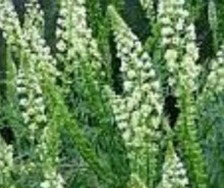





With Christmas coming up, it’s time to remember that plants make lovely presents. Trouble is, many people find their flowers beginning to fade all too soon, so we give some tips on keeping these plants healthy. Garden centres and florists will have a wide and exciting range of plants available – but read the labels and instructions carefully, and don’t send difficult plants to people who aren’t greenthumbs. We also tell you about a fly-deterrent kitchen pot plant.
Needs list: Christmas present plants; 1 pkt mignonette seed; 1 pkt 3 in peat pots.
Time budget: 7 hours in 2 weeks
Cold, wet soil just as much as cold, damp air and low night temperatures severely restrict gardening now. Plants stay firmly underground or dormant. Statistically this is the coldest month of the year Time to stay indoors and learn about new techniques, such as pruning.
Round about Christmas time every florist’s shop and garden centre in sight will be lull of houseplant cyclamen – a glorious array of colour, every shade of pink from purest white through to scarlets, crimsons and purples, some with bi-coloured flowers, with petals fringed, fluted, spirally twisted, and many with marvellous leafmarkings.
Buy plants with lots of buds but few flowers open. Give them a cool, well-lit position. When watering, soak the plants, then let them dry out before watering again. Never splash water over the corm: it could rot it. After flowering let leaves turn yellow, dry corm completely, then start into growth by watering around July for Christmas flowering.
Now summer’s leaves have fallen, been swept up and put in the compost bin, and winter’s setting in, its time to check up on routine maintenance chores around the garden. Repair damaged fences as soon as you notice damage: don’t wait till later. They deteriorate very quickly once damaged. Repair mortar in walls, especially behind newly planted fan-trained trees.
Check trellis and other construction work, to see it’s still stable, safe. Keep patio construction work under burlap/sacking in frosty weather. If you take the nursery’s or garden centre labels of plants, keep a record of what you planted where. If you get enthusiastic, make a grid of your garden and keep a card index of what you planted in which segment.
Learn the Latin names of the plants. Common names are often confusing. If you’re given a plant as a present and it looks a bit jaded, put it in a light room with an even temperature. Avoid rooms that are too hot, too stuffy, too dark, too dry. Create atmospheric humidity round the plant.
Winter is quite definitely the time for indoor gardening: just one thing: if you start indoor gardening in winter, don’t forget the plants in summer – it’s all too easily done. Rule I for just about all house plants – except cacti, succulents – is that they like atmospheric humidity. More plants are killed in homes because the air in homes is centrally heated and dry than any other way. Here’s how to beat the problem. Take a bowl about twice the diameter of the pot. Place pebbles in the bottom. Place the pot on the pebbles. Keep water at the bottom of the bowl in among the pebbles. Be sure the water level never reaches the bottom of the pot.
Next grow your own herbs. Start seeds in peat pots filled with soilless growing mix. Plant out late spring/early summer 4 weeks after your last official frost. On your patio, move your tub/ container to a sunny, sheltered spot. Plant up with fancy-leaved ivies to trail over the edge. Use reference books to identify plant presents you’ve been given.
 The Mignonette
The MignonetteMignonette is one of the most delightful of all the old-fashioned flowers, and has been treasured for centuries for its sweetly scented flowers. The flowers are not as bright as those of many modern plants, which is probably why it is less widely grown now than it used to be. In a drab, busy world we want gay, garish colours in our gardens.
We’re growing mignonette not as a garden plant, but as a house plant, for the kitchen. Reason? Its marvellous scent repels flies. Sow seed in peat pots filled with a soilless growing mix, thin seedlings to 3 plants per pot. Place peat pot in a crocked clay pot of slightly larger diameter, fill gap with soilless growing mix. Stand in ornamental plant container on kitchen window sill. Give spares to friends. If you’ve still got spares to spare plant them in the garden.
Two Hour Gardening Project: Stage 26 Climbing Plants and Pergolas
Two Hour Gardening Project: Stage 25 Getting To Know Your Garden
Two Hour Gardening Project: Stage 23 Principles of Pruning
Two Hour Gardening Project: Stage 19 Helleborus Niger and Bug Hunting
Two Hour Gardening Project: Stage 18 Choosing Shrubs for the Garden
Copyright © www.100flowers.win Botanic Garden All Rights Reserved